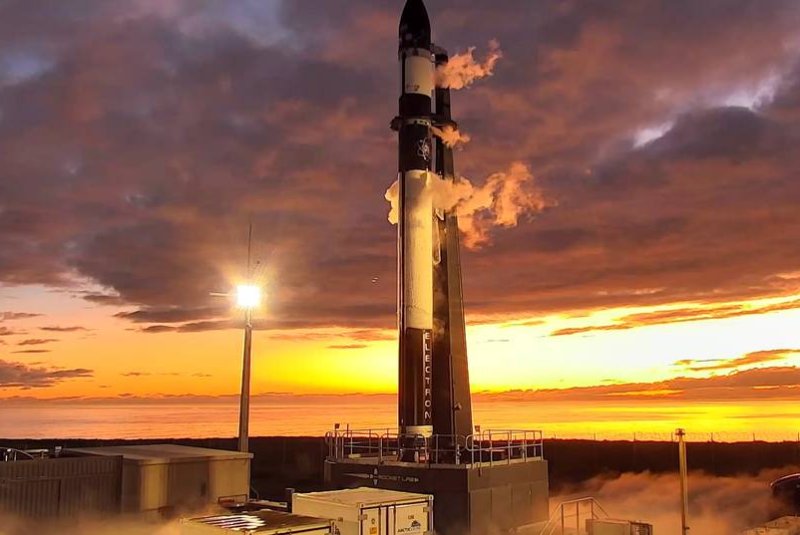1 of 4 | Rocket Lab’s Electron rocket topped by the CAPSTONE spacecraft sits on the pad at the company’s Launch Complex 1 in New Zealand ahead of its launch back in June. CAPSTONE is an acronym for Cislunar Autonomous Positioning System Technology Operations and Navigation Experiment. File photo courtesy of Rocket Lab
Nov. 14 (UPI) -- NASA's CAPSTONE CubeSat probe arrived in orbit around the moon Sunday night in a major win for the space agency following a major engine malfunction over the summer that nearly derailed the mission.
CAPSTONE had to fire its engines twice more to get back to the moon, where it entered a highly elliptical near rectilinear halo orbit or NRHO about 7:39 p.m., NASA said.
The U.S. space agency made the announcement Monday amid a flurry of test missions in recent months that set the stage for astronauts to return to the lunar surface for the first time in more than 50 years.
The 55-pound spacecraft, which looks like a microwave oven, was disabled for several weeks after a faulty engine burn sent it careening into outer space on Sept. 8.
Back on Earth, it took mission control until early October to fix the propulsion system and stabilize the orbiter, which was fired up again about two weeks ago after it reemerged 69,000 miles off course.
Over the next five days, CAPSTONE will perform maneuvers to perfect its orbit while sending constant data back to mission control.
CAPSTONE is an acronym for Cislunar Autonomous Positioning System Technology Operations and Navigation Experiment. The craft is being used to determine the orbit of a future space station known as Gateway, which NASA plans to float around the moon as part of the initial phase of the Artemis program.
The mission, which launched back on June 28, seemed somewhat hexed from the outset.
In another mischance early in the mission, ground control lost contact with the probe after it accidentally jettisoned a supplementary crew ship, but technicians quickly found the problem in a coding command that had been improperly formatted and fixed it.
Now that the probe is back on track, the mission is expected to last at least six months, with the probe laying the path for Gateway and also conducting navigation and communication experiments in conjunction with NASA's Lunar Reconnaissance Orbiter.
"Artemis is the first step in the next era of human exploration," NASA says on its blog. "Together with commercial and international partners, NASA will establish a sustainable presence on the Moon to prepare for missions to Mars."















